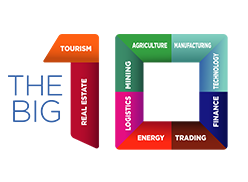The United Arab Emirates (UAE) has long been synonymous with oil and gas wealth. Since the discovery of oil in the 1950s, hydrocarbons have fueled the country’s meteoric rise from a cluster of small fishing villages to a global economic powerhouse. Yet today, the UAE’s energy story is no longer just about extraction—it’s about innovation, diversification, and a future-ready approach to energy leadership.
Let’s take a closer look at how the UAE is redefining its oil and gas sector and pioneering a new era of sustainable energy excellence.
A Legacy Built on Oil and Gas
The UAE, home to around 6% of the world’s proven oil reserves and the seventh-largest natural gas reserves, has built much of its prosperity on hydrocarbons. Abu Dhabi, in particular, hosts the majority of the UAE’s reserves through the operations of ADNOC (Abu Dhabi National Oil Company), one of the world’s leading energy producers.
Historically, revenues from oil and gas enabled the UAE to invest in infrastructure, healthcare, education, and diversification strategies that have created one of the most resilient and dynamic economies in the Middle East.
Embracing Innovation in Oil and Gas
Recognizing that the future belongs to those who innovate, the UAE’s oil and gas sector is heavily investing in technology and smart solutions to boost efficiency, reduce emissions, and extend the life of existing fields.
Key innovations include:
-
Enhanced Oil Recovery (EOR): Advanced techniques like carbon dioxide injection and nitrogen gas are maximizing output from mature fields.
-
Digital Oilfields: IoT, AI, and Big Data are being integrated into operations to monitor wells in real time, predict maintenance needs, and optimize production.
-
Blockchain and Robotics: ADNOC is piloting blockchain technology for supply chain management and using drones and robots for inspections, improving safety and cutting costs.
Impact: These technologies not only increase yield and profitability but also significantly reduce the sector’s environmental footprint.
Sustainability: A New Pillar of Growth
As the global push for decarbonization intensifies, the UAE is leading the region in sustainable energy practices within oil and gas.
Major initiatives include:
-
Carbon Capture, Utilization, and Storage (CCUS): ADNOC’s Al Reyadah facility is one of the first commercial CCUS projects in the Middle East, capturing around 800,000 tons of CO₂ annually.
-
Methane Emissions Reductions: ADNOC has committed to achieving near-zero methane emissions by 2030.
-
Energy Efficiency Programs: By improving energy management systems, the sector aims to reduce operational emissions significantly.
In a historic move, ADNOC also announced plans to reach net-zero emissions by 2045, the earliest target in the oil and gas industry globally.
Diversification Within the Energy Sector
While innovation is key, the UAE understands that a sustainable future requires diversification both within and beyond hydrocarbons.
Efforts within energy include:
-
Natural Gas Expansion: The UAE aims for self-sufficiency and exports by developing unconventional gas fields like Jebel Ali and Hail and Ghasha.
-
Petrochemicals Growth: ADNOC is investing heavily in petrochemicals, targeting a major increase in the production of plastics, fertilizers, and industrial chemicals.
-
Hydrogen Economy: The UAE is positioning itself as a global leader in blue and green hydrogen production, essential for decarbonizing heavy industries and transport sectors.
Beyond energy: The oil wealth is funding investments into tourism, technology, finance, and logistics—sectors that will future-proof the UAE’s economy.
Global Collaboration and Ambitious Goals
The UAE’s approach is inherently global and collaborative. Through international partnerships, strategic acquisitions, and joint ventures, it’s aligning itself with future energy trends.
Examples:
-
Partnerships with global energy firms like BP, TotalEnergies, and Occidental Petroleum.
-
Hosting COP28 in 2023, where the UAE emphasized bridging the traditional energy sector with climate goals.
-
Launching new clean energy initiatives, like the UAE-US Partnership for Accelerating Clean Energy (PACE).
Vision: To become an energy superpower across both traditional and renewable sectors.
Conclusion: Leading by Example
The UAE’s oil and gas industry is no longer just about drilling and exporting—it’s about pioneering innovation, driving sustainability, and shaping the future of global energy.
Through its strategic blend of tradition and transformation, the UAE shows that even a nation built on hydrocarbons can lead the way toward a cleaner, smarter, and more resilient energy future.
In the UAE, the future of oil and gas isn’t just about energy—it’s about leadership.
Read more on The Big 10:
UAE’s Sustainability Vision 2030: How the Country is Leading the Way in Green Development
The Role of Foreign Direct Investment (FDI) in the UAE’s Growth and Diversification
How the UAE’s Free Zones are Attracting Global Entrepreneurs and Investors


